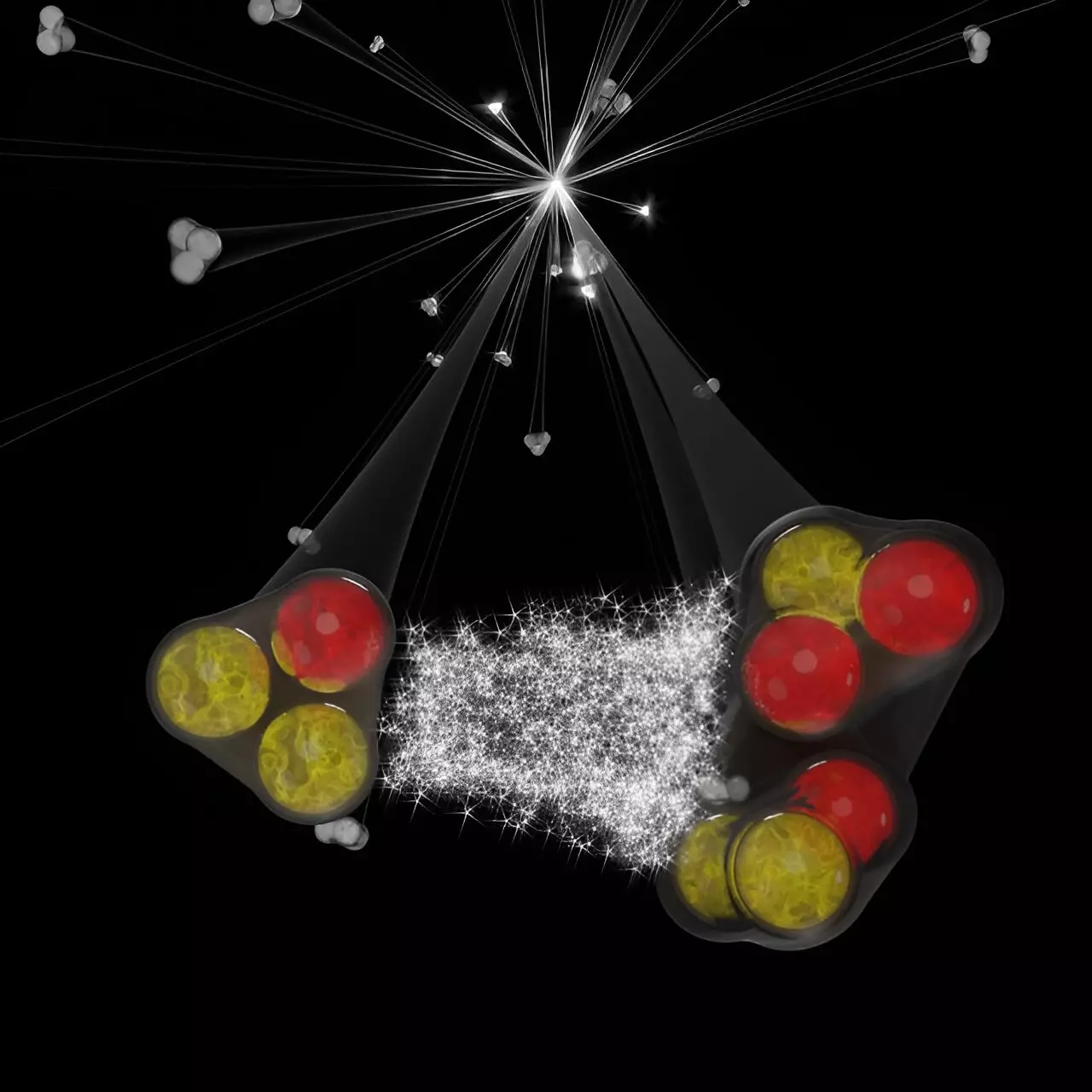Advancements in our understanding of nuclear forces have seen a remarkable leap thanks to the recent findings by the ALICE collaboration, as detailed in their article published in *Physical Review X*. This groundbreaking work delves into the intricate correlations present in kaon-deuteron and proton-deuteron systems, thereby shedding light on the dynamic behaviors of three-body nuclear interactions. This article seeks to provide a comprehensive analysis of their findings, the methodologies employed, and the broader implications for the field of nuclear physics.
In fundamental physics, interactions between particles are often simplified to pairwise interactions. However, the true nature of nuclear interactions extends beyond this reductionist view, especially when dealing with three-body systems like those scrutinized in the ALICE collaboration’s studies. The forces governing these interactions are essential for unraveling complex nuclear phenomena, including nuclear structure, high-density matter characteristics, and even the fundamental composition of neutron stars.
The research conducted during high-energy proton-proton collisions at the Large Hadron Collider (LHC) is particularly pertinent. In these high-energy environments, particles are produced in close proximity, with their interactions occurring at incredibly short distances—commonly on the order of femtometers (10^-15 m). This proximity raises critical questions about whether and how these particles influence one another in the brief moment before dispersing into a chaotic spray of particles.
A pivotal aspect of the ALICE collaboration’s investigation revolves around the concept of quantum correlations. When two particles emerge closely and share similar momentum and trajectories, they are subjected to various interactions, including quantum statistics, the Coulomb force, and strong nuclear interactions. The use of deuterons—composite particles made of protons and neutrons—adds an additional layer of complexity, providing a meaningful framework to assess the nature of their interactions with kaons and protons within a three-body context.
The collaboration utilized their advanced particle identification techniques to discern these correlations amidst the clutter of high-energy collisions. This process involved creating correlation functions that quantify how the likelihood of finding two particles with specific momentum relations diverges from what would be expected if there were no interactions. Theoretical expectations situate the correlation function’s value at unity when no correlation exists; however, findings showed that interactions could be either attractive or repulsive—characteristics crucial for understanding force dynamics.
The analysis revealed that both kaon-deuteron and proton-deuteron systems exhibited correlation functions below unity for low relative transverse momenta, indicating a predominately repulsive interaction. The distance at which these particles—specifically deuterons—occur is notably small, emphasizing the tight range in which these interactions happen, approximately 2 femtometers.
A distinct finding was the breakdown of the effective two-body model in accurately describing proton-deuteron correlations. This failure signified a nuanced behavior in three-body interactions, necessitating advanced calculations that consider not just the two-body interactions but also the complex structure of the deuteron itself. By employing both two- and three-body interaction models, researchers achieved an excellent agreement between theoretical predictions and experimental data, highlighting the intricate nature of short-range dynamics in three-particle systems.
The research carried out by the ALICE collaboration exemplifies innovative strategies for probing three-body interactions in nuclear physics. Their methods offer a foundation for further exploration using data from future LHC runs, specifically targeting baryon systems in strange and charm domains—areas that remain largely inaccessible through traditional experimental approaches. This ambitious trajectory may lead to a deeper understanding of the forces at play within the nuclear realm and potentially unveil new physics beyond our current models.
The exploration by the ALICE collaboration marks a significant step forward in advancing how we perceive and study nuclear forces in multi-body systems. By pushing the boundaries of our understanding, this research not only lays bare the complexities of internuclear interactions but also inspires future endeavors in the captivating field of nuclear physics.

